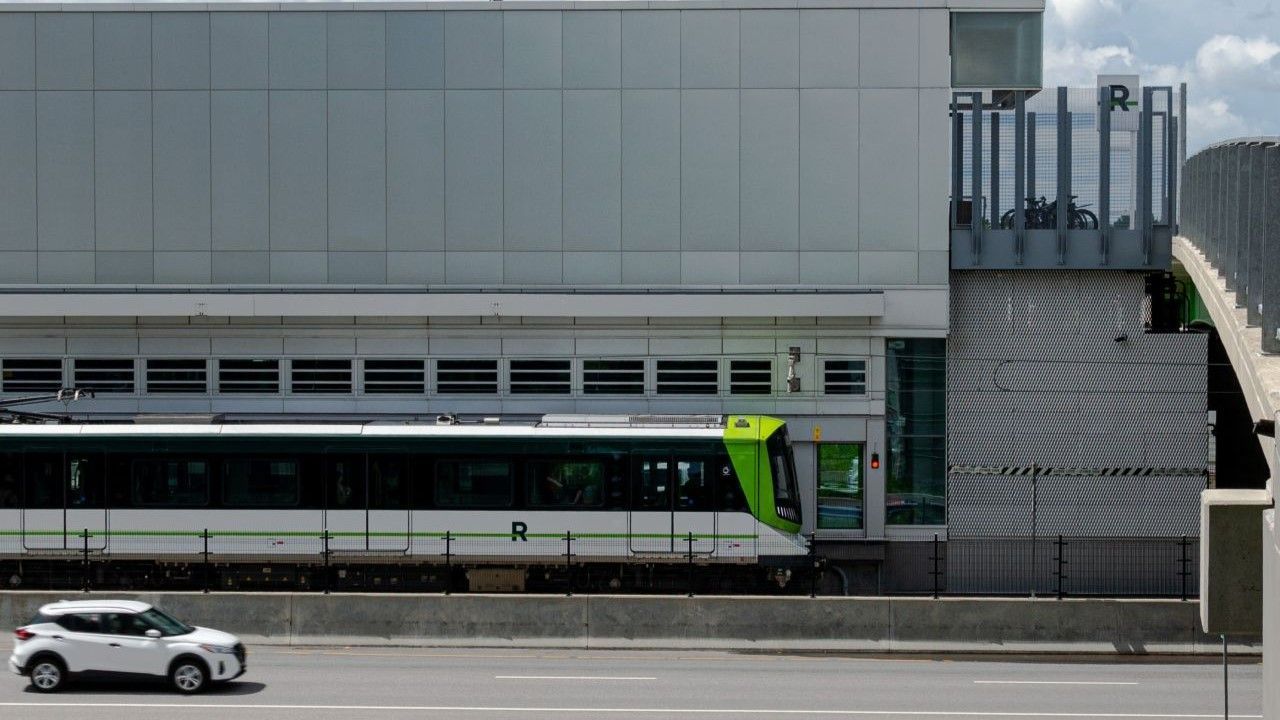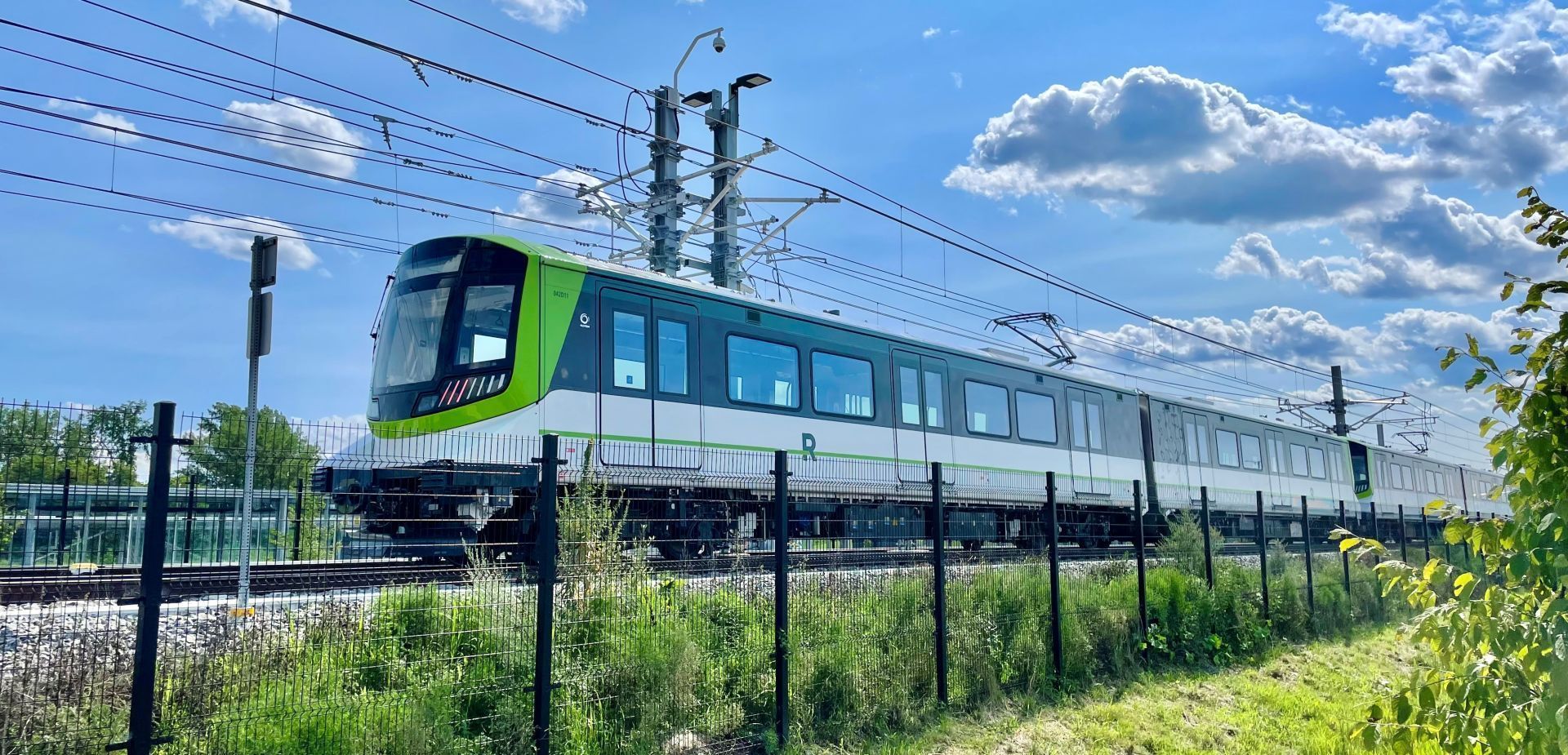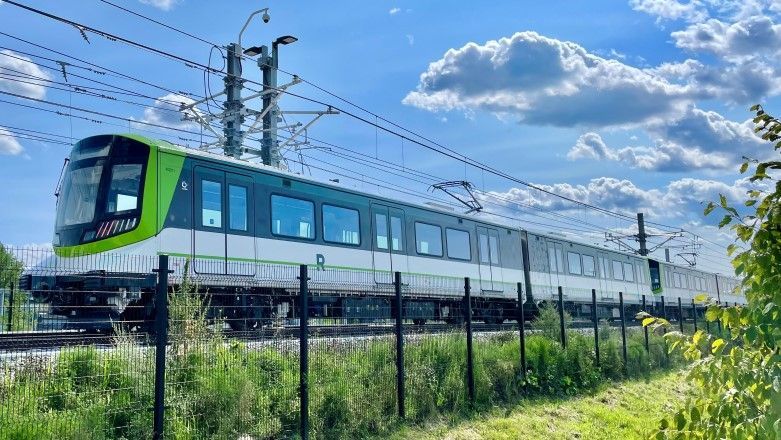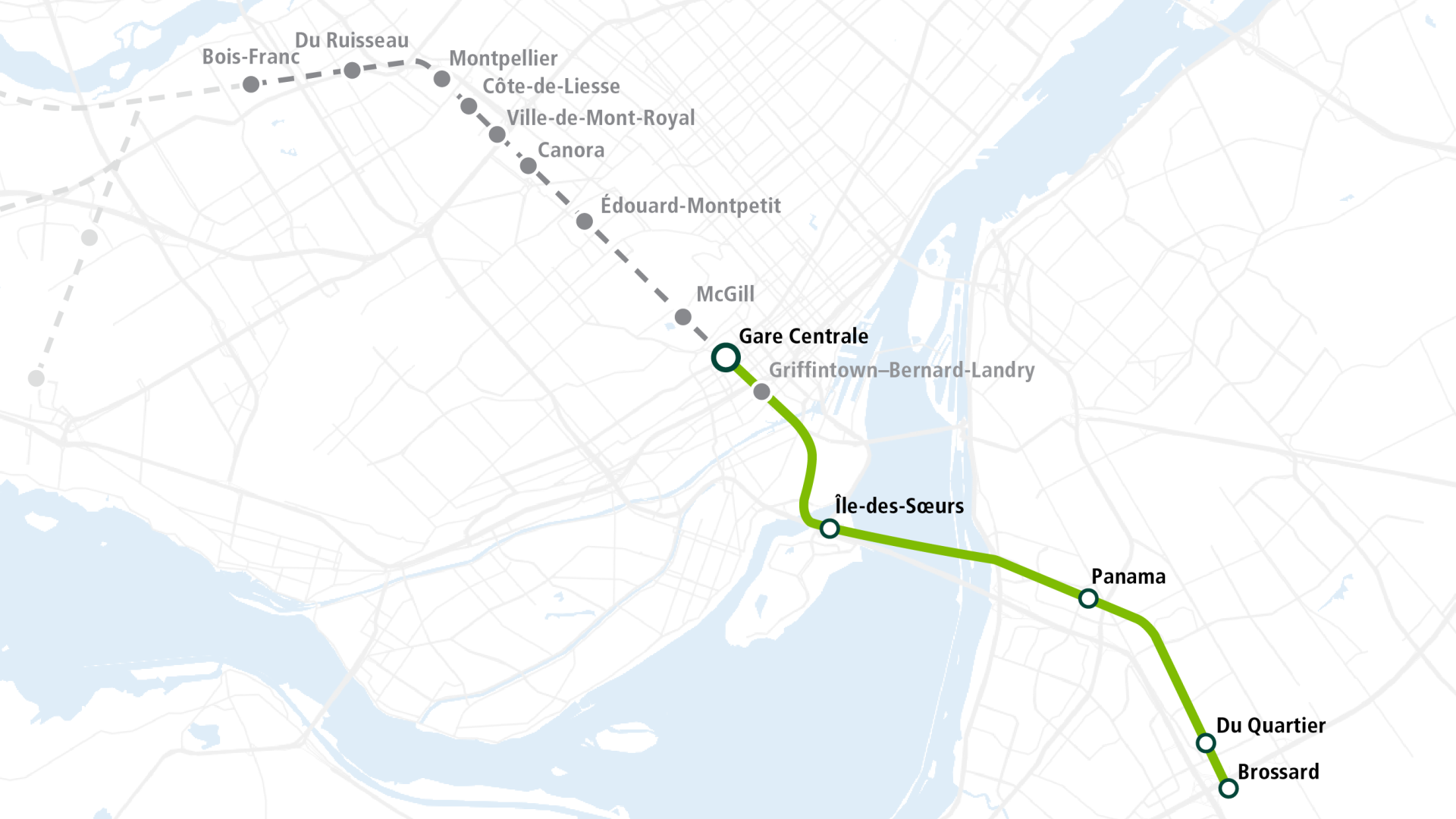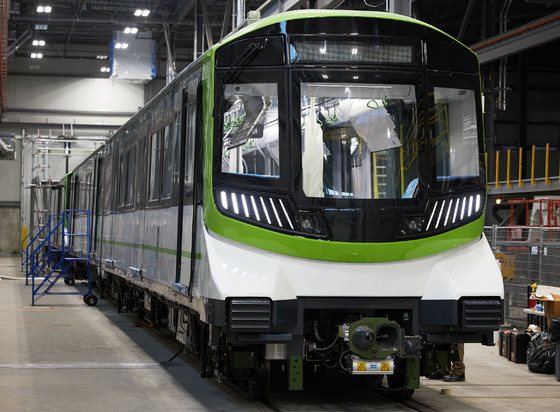Today, with the Right Honourable Justin Trudeau, Prime Minister of Canada, Mr. François Legault, Premier of Québec and Ms. Valérie Plante, Mayor of Montréal in attendance, CDPQ and its subsidiary, CDPQ Infra, inaugurated the first branch of the Réseau express métropolitain (REM), connecting Brossard to Gare Centrale.
Dignitaries and members of the public took part in the first official trip on the 16.6-km route connecting downtown Montréal to Brossard in 18 minutes.
This major step marks the start of a new network that is efficient, reliable and will facilitate the daily travel of over 30,000 people as they go to work, school, leisure activities, appointments or to visit friends and family.
Once completed, the fully automated and electric REM will reduce GHG emissions by 100,000 tonnes per year. In addition, with an overall network of 67 kilometres, it will be the longest automated metro in the world.
The public is invited to experience the new light metro for free over the weekend of July 29–30. Activities will also be scheduled on Esplanade PVM at Place Ville Marie during the weekend to highlight this historic milestone. Regular service on the South Shore Branch will begin Monday, July 31.
Users can learn more details about the new service starting today by visiting the Travel section of the REM.info website.
Quotes
"The REM will transform the way people get around the Greater Montréal area. It is the largest public transportation project undertaken in Québec in the last 50 years, and will ensure that Montrealers and all Canadians benefit from a transportation service to Montréal-Trudeau International Airport that is both efficient and clean. We are a major partner in this major project."
Justin Trudeau, Prime Minister of Canada
"The REM will improve mobility in the Greater Montréal area. It's a fine example of our efforts to provide Quebecers with fast, environmentally-friendly and practical public transportation infrastructure. Serving citizens living in the suburbs, outside the city centres, is a major challenge, and this is precisely what the REM will make possible. I'm confident that we're heading in the right direction, and that if we provide Quebecers with modern, fast and efficient public transportation, more and more people will use it."
François Legault, Premier of Québec
"A major milestone has just been reached in the realization of this brand new transportation system. It will have an impact on the daily lives of thousands of people in the Greater Montréal area, and we're very proud of it. The REM speaks to our dual mandate, as it will generate significant economic benefits for Québec and each time passengers step on board, they will contribute to financing their retirement. It's truly a signature project that will deliver tangible benefits starting today and for future generations."
Charles Emond, President and Chief Executive Officer, CDPQ
"Taking an idea and bringing it to fruition is quite an accomplishment for the thousands of people who've worked tirelessly for 5 years now on building this major project for the greater metropolitan region. I'd like to personally thank all these REM artisans whose collective effort is now giving thousands of citizens access to a brand-new, sustainable, frequent and efficient mobility service."
Jean-Marc Arbaud, President and Chief Executive Officer, CDPQ Infra
"The inauguration of the first segment of the REM marks an important milestone in the history of the metropolitan area, and the start into a new era of mobility in Montréal. This new structural link is one of the keys to ensuring the vitality of our downtown and, eventually, to redeveloping and densifying the Bridge-Bonaventure area. This ambitious project is part of our vision for a more accessible and resilient metropolitan area for future generations."
Valérie Plante, Mayor of the Ville de Montréal
"The opening of the REM is a historic moment, a true revolution in the way we get around collectively and in how we think about the future of our cities. In Brossard, the three REM stations are major development hubs and living environments that will quickly become prime locations. Imagine leaving the Brossard terminal, crossing the deck of the new Samuel-De Champlain Bridge and arriving at Montréal's Gare Centrale Station, all in just a few minutes. Brossard is very proud to have this innovative public transit project within its city limits. It's a source of pride to us all!"
Doreen Assaad, Mayor of Brossard
"The commissioning of this first segment of the REM marks the beginning of a new era in mobility. This unprecedented mode of transportation, which will be integrated into the various existing networks, will change how we travel in the Greater Montréal area. CDPQ Infra and its partners have every reason to be proud of the work they have accomplished. I encourage members of the public to come aboard and discover for themselves the many benefits of this project."
Geneviève Guilbault, Deputy Premier of Québec, Minister of Transport and Sustainable Mobility
"The arrival of the REM, the largest public transportation project in Québec since the opening of the metro in 1966, will bring lasting changes to the mobility of citizens travelling between the South Shore and Montréal. It's the culmination of a colossal effort by the metropolitan region's partners – exo, RTL and STM – which have revised their bus networks to ensure fully integrated services. Our teams are ready to welcome users so that they'll have the best experience possible and to encourage them to adopt this modern, 100% electric mode of transportation."
Benoit Gendron, Director General of the Autorité régionale de transport métropolitain (ARTM)
"We are proud and pleased to launch the REM with the Caisse de dépôt et placement du Québec. What a joy it is to develop Alstom's latest driverless metro technologies in Québec and to support the City of Montréal in its effort to decarbonize mobility to make our world and cities easier to live in, greener and more environmentally friendly. We deeply thank CDPQ for their continuous support here in Montréal and beyond as Alstom main shareholder."
Henri Poupart-Lafarge, Chairman and CEO of Alstom
"Building the REM is much more than construction or engineering; it represents an opportunity to build the future. To this end, we brought together more than 4,000 men and women of 59 different nationalities. I'd like to extend my warmest thanks to them and their families, without whom none of our efforts would have been possible. We are very grateful for the collaboration of GPMM and the support received from our partners (SNC-Lavalin, Dragados, Aecon, Pomerleau and EBC) and, above all, for the exceptional leadership and resilience of CDPQ Infra."
Jaime Freyre, Project Manager, NouvLR consortium
"We are proud of our investment in the REM, one of Canada's most important transit infrastructure projects, whose initial opening will relieve congestion and reduce greenhouse gas emissions in Montréal. Initial operations of our first and largest investment demonstrate the impact of our work. This is one of nearly 30 investments by the Canada Infrastructure Bank that are under construction or in development across the country."
Ehren Cory, CEO, Canada Infrastructure Bank
"The launch of the Réseau express métropolitain (REM) clearly shows how the electrification of transportation is not only about individual electric vehicles. Electric public transportation is an essential pillar of a low-carbon economy, and Hydro-Québec is honoured to have played a crucial role in this project."
Claudine Bouchard, Executive Vice President, Chief Infrastructure and Energy System Officer at Hydro-Québec
The REM's South Shore Branch at a glance:
- 16.6 km of double track
- Thirteen four-car trains
- Five new stations
- Operating 20 hours per day
- Brossard to downtown Montréal in 18 minutes
- Frequency varies from every 3 minutes 45 seconds during peak hours to every 7 minutes 30 seconds outside of peak hours
- Integration of a sustainable and structuring transportation system on the Samuel-De Champlain Bridge
- Two new bridges (l'Île-des-Sœurs channel and Lachine Canal)
- A maintenance centre and control centre using cutting-edge technology
Source : CDPQ Infra
